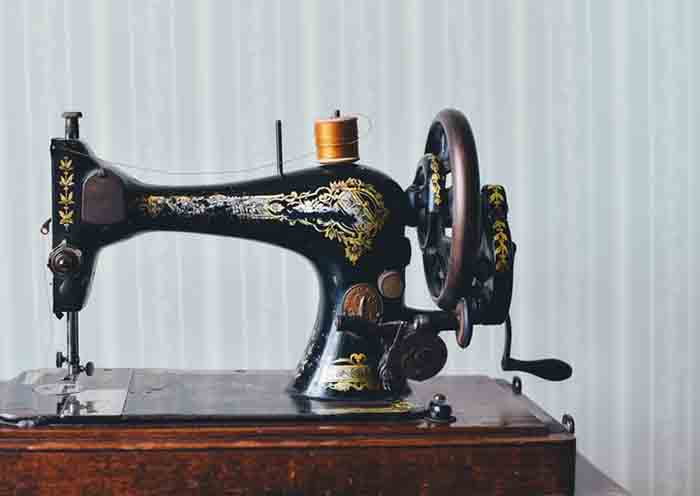Initially, sewing machines were manufactured for garment factory production lines, allowing for clothing to become uniformly mass-produced. It was French tailor Barthelemy Thimonnier who invented the first functioning sewing machine in 1830 for use in his garment factory.
This original machine used only one thread and a hooked needle for a chain stitch. His factory was burnt down and he was nearly killed by an angry mob of French tailors who were afraid his machines would leave them unemployed. A few years later in America, Walter Hunt shared the same fears, and abandoned the work to patent his own version of a straight-seam sewing machine. The fears were unfounded, as industrial sewing machines created multiple job opportunities worldwide.
Modern garment factories incorporate the same mass production techniques as other industries, with each workstation completing one part of the overall job. Industrial sewing machines are generally designed to perform one specific sewing function such as embroidery. Machines with different functions are operated to complete clothing items in a production line. Marketing to individuals didn’t begin until 1889, allowing for women to have the means to create clothing for their family without the labor-intensive hand stitching. The domestic sewing machine used in the home is manufactured to perform many tasks from sewing straight or zigzag stitches and the creation of buttonholes, as well as stitching buttons on to the piece of clothing.
Industrial sewing machines, like their domestic counterparts for the home, were created to simplify and speed up the otherwise labor-intensive hand stitching. The domestic sewing machine is manufactured to perform many tasks from sewing straight or zigzag stitches and the creation of buttonholes, as well as stitching buttons on to the piece of clothing. Sewing machines were adapted for use in industrial settings, allowing for clothing to become uniformly mass-produced. The industrial sewing machines are generally designed to perform a specific sewing function such as embroidery or applying buttonholes. Companies from all over the world manufacture industrial sewing machines with very basic features as well as higher-end computer operated models.
A variety of machines with different functions are operated to complete clothing items in a production line. A few examples would be a Bag Closer sewing machine which is used for sewing a single thread chain-stitch, a high-speed plain sewer is used for stitching seems and double needle machines are used for adding top stitching details to items like jeans.
Walking foot machines are invaluable for quilting and sewing coats, as it keeps the fabric moving along without bunching and making for a smoother and faster production. Overlock serger sewing machines, which are also available in smaller versions for the home, create the whipped V stitch along the edge of a seam of T-shirts and other stretchable fabrics.
Thank you for taking the time with me to learn more about what Mr. Done Right, the handyman / contractor does for you.
Sincerely,
Nathaniel Peterson
(AKA) Mr. Done Right
For more information on handyman or contractor work in the greater Austin area (or beyond), please contact your premiere handyman, Nathaniel Peterson, AKA Mr. Done Right Handyman Contractor of Austin, because Mr. Done Right ensures any repairs and/or remodels get Done Right the first time! Call us now for a free estimate! 512-659-8931
* Click here to protect your privacy and the safety of your children on the Internet.
Online Marketing Powered by www.OnlineMarketingExperts.agency





Recent Comments